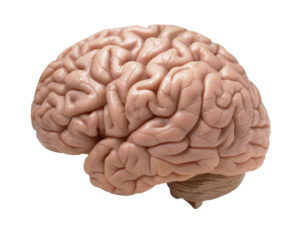 Something to ponder: Are tiny plastic particles (microplastics) that enter the human body traveling to the brain and causing harm? An article by the science writer Erica Cirino examines that question by looking at existing research and comes to the disturbing conclusion of: Yes, they are.
Something to ponder: Are tiny plastic particles (microplastics) that enter the human body traveling to the brain and causing harm? An article by the science writer Erica Cirino examines that question by looking at existing research and comes to the disturbing conclusion of: Yes, they are.
Yes, that plastic particles are inhaled or ingested (in food, water, and air), that many are excreted, but some travel to organs in the body, are absorbed in the bloodstream, and some eventually cross into the brain. Research in fish shows that this ultimately results in abnormal (dysfunctional) behavior. [Note: she is the author of the book Thicker Than Water, which addresses the plastics pollution problem.]
One problem is that plastic particles contain all the chemicals in the original plastic, which includes endocrine (hormone) disruptors. Another is that the plastic particles accumulate once they are in the organs. Yes, studies find plastic particles in humans (e.g., the placenta, the lungs, and other tissues) and also that many microparticles are excreted in feces. But much is still unknown.
A study by Canadian researchers estimated that the consumption of microplastics by Americans ranges from 39,000 to 52,000 particles (depending on age and sex) each year. When they added in inhalation of microplastic particles, the numbers increased to 74,000 to 121,000. And those who only drink bottled water may be getting an additional 90,000 microplastics (versus about 4000 microplastics from tap water). Yikes!
Since more and more plastics are entering the environment each year, then this does not bode well for humans. We need to deal with plastic pollution!
Excerpts from an article by Erica Cirino in The Scientist: Opinion: Plastic Pollution May Endanger Brains
In 1950, 2 million metric tons of plastic were produced globally; in 2015, petro-chemical companies churned out 381 million metric tons. Most plastic waste—more than 6.3 billion metric tons of it has been generated by humans over the last 80 years—is never recycled. And to scientists’ best knowledge, petroleum-based plastic will never biodegrade. Instead, it breaks up into ever-smaller particles that always remain plastic.
While some of these plastic particles pass through us, it seems others are retained. In a first-of-its-kind study, published in 2020, scientists in Italy used spectroscopy to find 12 plastic particles in six human placentas that were collected after birth. The search for the plastic inside us is just beginning in earnest, but what little data there are on the effects of plastics in and on our bodies (or the bodies of nonhuman animals) suggest that there is reason for concern and caution.
Chemicals found in plastic particles include toxic, often hormone-disrupting plasticizers, which lend plastic its strength and durability, and additives that confer color, texture, or electrical conductivity and could potentially influence our biology. Plastic particles in the environment also absorb dangerous industrial chemicals, such as PCBs and heavy metals that are widespread in many ecosystems, and deliver them into the bodies of the animals that ingest or absorb the particles. Sherri Mason, a freshwater plastic pollution researcher and the sustainability coordinator at Penn State Erie, the Behrend College, refers to microplastic particles as “little poison pills.”
Those poison pills appear to be harmful to the brains and other organs of the nonhuman animals that are known to harbor them. In fish, the presence of plastic particles in the brain has been linked to physical and chemical abnormalities in that organ and elsewhere in the body, and often to dysfunctional behavior that impairs the ways certain species feed, move, reproduce, and ultimately survive. Scientists at the Neurotoxicology Research Group at Utrecht University, in a review of studies investigating the effects of plastic particles on nonhuman brains, hypothesize that at least some plastic particles travel into animals’ organs, are absorbed into the bloodstream, and cross the blood-brain barrier. If the behavior of plastic particles in nonhuman animals is any indication of our fate, we had better act now to significantly reduce our use of plastic—and begin remediating the mess we’ve already made.
